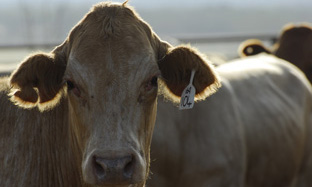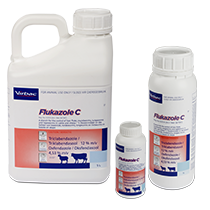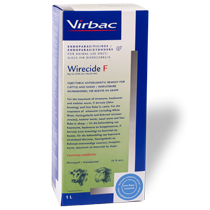
Liver Fluke - Effect on the liver
The liver ensures detoxification and excretion of endogenous and exogenous waste. It neutralizes toxic elements from the metabolism (bilirubin, ammonia, ketones) then transforms them into recycled nutrients and expels them via feces or urine
“The liver is an extremely important organ. It provides functions essential for: General health, Vitality, Production, Reproduction.”
The Liver is the largest internal organ and has numerous functions including:
- Protein, fat and carbohydrate metabolism.
- Storage of water soluble vitamins, fat soluble vitamins, iron, triglyceride and glycogen.
- Fights infections and filters out toxins.
- Regulating and breaking down of hormones
Liver fluke infections cause severe damage in livestock from the time the animal ingest metacercaria (Infectious stage) until it is controlled (or until the adult liver fluke dies and this can take up to two years)
In cattle, about ± 25% of the metacercaria ingested reach the liver within 2 weeks to 85 days after ingestion. In the case of sheep, up to as much as 80% of the metacercariae reach the liver during this time. The rest migrate through the body and cause damage to other organs until the animal eventually dies.
DAMAGE CAUSED BY LIVER FLUKE
⥢Bleeding is caused in the small intestine due to liver fluke damage
The metacercaria are ingested by the animal when grazing and follow the digestive tract until they reach the small intestine. In the small intestine, they bore through the intestinal wall and end up in the body cavity. They migrate back and forth for around two weeks until they reach the liver.
⥢ Migrating liver fluke cause necrosis and bleeding spots in the liver
The migrating immature to adult liver fluke stadia in the liver cause haemorrhage and damage to liver tissue, leading to unproductive scar tissue.
⥢ Li
ver
fluke infestations cause thickening, calcification and blocking of the bile ducts.
The development from early immature to adult liver fluke stadia in the bile ducts causes irritation to which the body reacts. The bile ducts thicken and may even form a “panhandle” where the bile duct becomes closed off, no longer transporting bile.
Liver Fluke control strategy
There is no quick fix for liver fluke, effective liver fluke control can be a challenge and needs to be addressed throughout the year .
The control strategy should be aimed at both reducing the number of parasites in the host as well as reducing the liver fluke population in the environment.
Research and experience have shown that effective and sustainable control is based on an integrated control program that includes chemical treatment (deworming the animals), pasture/ grazing management, fencing of contaminated areas (if possible) and repairing of leaking troughs.
“For optimal liver health use a STRATEGIC CONTROL STRATEGY throughout the year to LIMIT THE DAMAGE caused by liver fluke”
60092306CM





